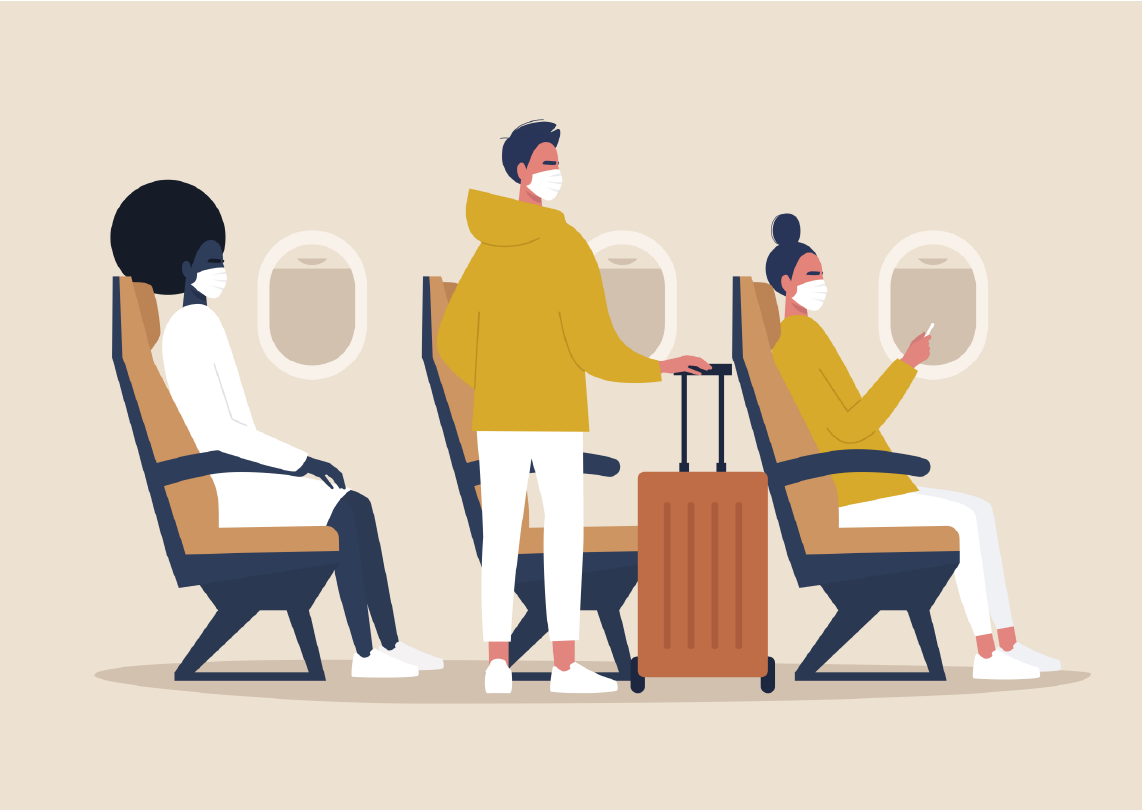
NOTE: This article was updated to reflect new guidance from the Centers for Disease Control and Prevention, in light of the Delta Variant.
As of this writing, the Centers for Disease Control and Prevention has adjusted its health and safety guidance. Per the CDC, fully vaccinated people may resume domestic travel in the U.S. without testing before or after, or self-quarantining afterwards. The CDC recommends delaying travel until you are fully vaccinated.
Though the CDC lifted many mask mandates in May, the introduction of the Delta variant, a more contagious variant of COVID-19, official guidance now recommends individuals to wear a mask indoors is they are in an area experiencing high transmission. The CDC's guidance also states that COVID-19 vaccines are shown to be safe and effective in preventing COVID-19, and are effective in preventing severe disease and death from variants, including the Delta variant.
As travel for in-person events resumes, here is a quick checklist based on existing CDC guidance for domestic travelers who have been vaccinated.
For full, up-to-date guidance, and for information about traveling internationally, visit cdc.gov/coronavirus.
Before you go
- As of this writing, the CDC recommends that you delay travel if you are not fully vaccinated. People who are fully vaccinated have had their second dose of a two-dose series at least two weeks previous, or their single dose of a one-dose series, at least two weeks previous.
- Self monitor, and stay home if you are sick, even if you are fully-vaccinated against COVID-19. This includes if you are sick with symptoms not COVID-related, as other contagious diseases can spread through travel. If you have a fever, wait until at least 24 hours after it is gone, without using fever-reducing medications.
- If you have symptoms of COVID, get tested and stay home. If you test positive, isolate for 10 days.
- Review the local health guidelines for the city or state you are visiting.
- Consider getting trip cancellation insurance for travel and lodging, in case you have to make a last-minute cancellation.
- Pack extra masks and sanitizing wipes or hand sanitizer for your trip, and to use on public transportation.
While traveling
- Wear a mask covering the nose and mouth in public settings and inside vehicles or public transit, especially if physical distancing is difficult. Masks are still required on planes, buses, trains and other public transit, as well as airports and stations.
- Practice physical distancing. On public transport, this may look like skipping a row of seats between yourself and other riders, if that’s possible. Look for physical distancing guidelines for each public transit authorities, such as floor decals showing where to sit or stand.
- Enter and exit buses through the rear entry door if possible.
- Avoid touching surfaces, and wash or clean hands with sanitizer after you arrive at your destination. Use touchless payment, and avoid exchanging things like payment by hand, if possible.
- Avoid eating and drinking while on public transportation, in order to ensure mask use. If you must eat or drink, try to find a space that is physically distanced from others.
- Improve ventilation in vehicles like rideshares or taxis by asking the driver to open windows or setting the air ventilation/air conditioning to non-recirculation mode.
When you arrive
- Self-monitor for COVID-19 symptoms, and isolate and get tested if you develop symptoms. Current guidance says that vaccinated people, or those who have recovered from COVID-19 in the past 3 months, do not have to self-quarantine or get tested after domestic travel.
- Make sure to follow all state and local recommendations and health guidelines.

